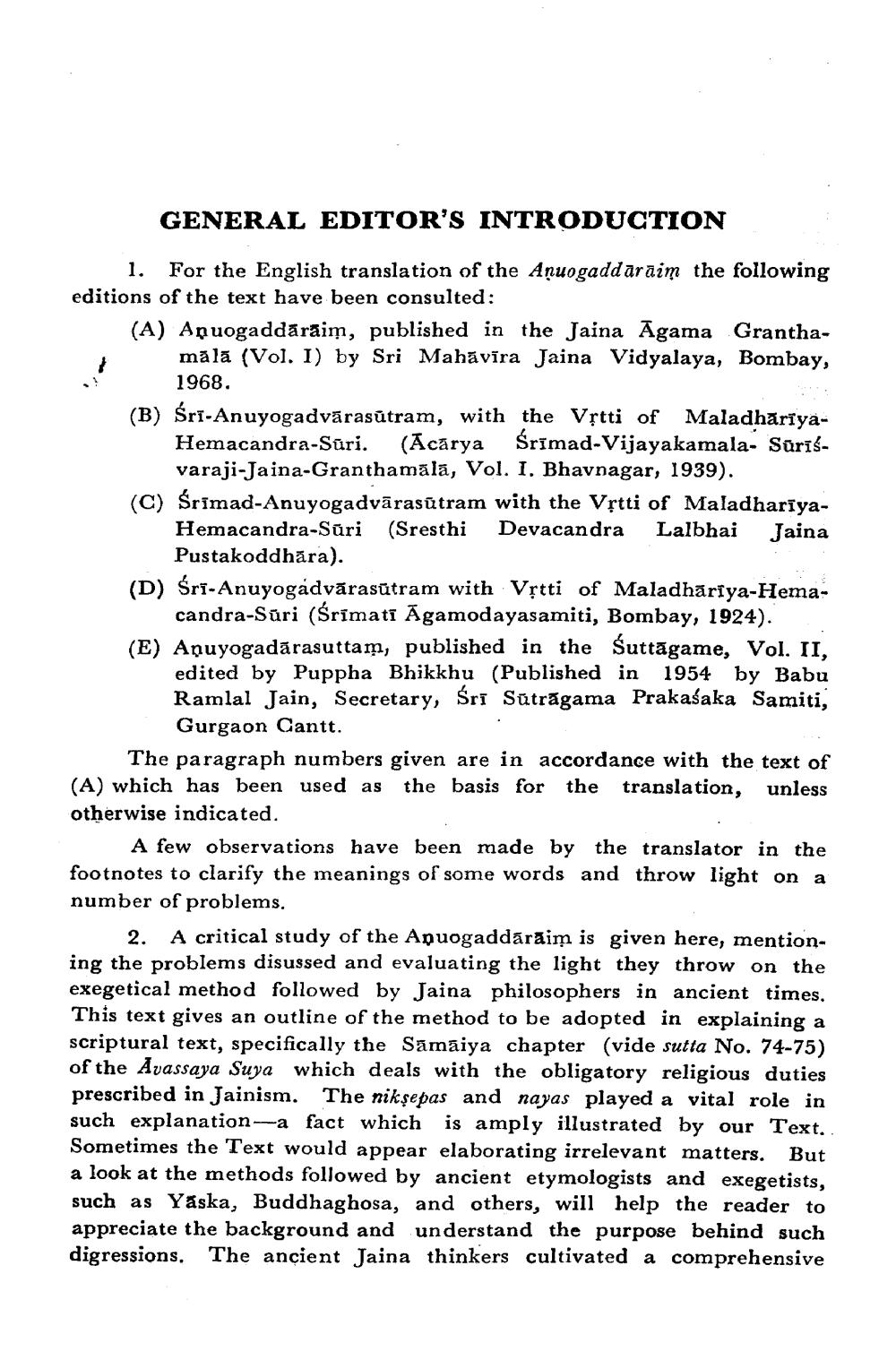Book Title: Agam 45 Chulika 02 Anuyogdwar Sutra Author(s): Nathmal Tatia Publisher: Research Institute of Prakrit Jainology & Ahimsa Mujjaffarpur View full book textPage 6
________________ GENERAL EDITOR'S INTRODUCTION 1. For the English translation of the Aņuogaddarāim the following editions of the text have been consulted: (A) Apuogaddārāim, published in the Jaina Agama Grantha māla (Vol. I) by Sri Mahāvīra Jaina Vidyalaya, Bombay, 1968. (B) Śrī-Anuyogadvārasútram, with the Vịtti of Maladhārīya Hemacandra-Sūri. (Acārya Śrīmad-Vijayakamala- Sūris varaji-Jaina-Granthamālā, Vol. I. Bhavnagar, 1939). (C) Śrīmad-Anuyogadvārasūtram with the Vịtti of Maladhariya Hemacandra-Sūri (Sresthi Devacandra Lalbhai Jaina Pustakoddhāra). (D) Śrī-Anuyogadvārasūtram with Vịtti of Maladhārîya-Hema candra-Sūri (Śrīmatí Āgamodayasamiti, Bombay, 1924). (E) Aņuyogadārasuttam, published in the Suttāgame, Vol. II, edited by Puppha Bhikkhu (Published in 1954 by Babu Ramlal Jain, Secretary, Śrī Sutrāgama Prakaśaka Samiti, Gurgaon Cantt. The paragraph numbers given are in accordance with the text of (A) which has been used as the basis for the translation, unless otherwise indicated. A few observations have been made by the translator in the footnotes to clarify the meanings of some words and throw light on a number of problems. 2. A critical study of the Apuogaddáraim is given here, mentioning the problems disussed and evaluating the light they throw on the exegetical method followed by Jaina philosophers in ancient times. This text gives an outline of the method to be adopted in explaining a scriptural text, specifically the Samaiya chapter (vide sutta No. 74-75) of the Avassaya Suya which deals with the obligatory religious duties prescribed in Jainism. The nikṣepas and nayas played a vital role in such explanation-a fact which is amply illustrated by our Text. Sometimes the Text would appear elaborating irrelevant matters. But a look at the methods followed by ancient etymologists and exegetists, such as Yaska, Buddhaghosa, and others, will help the reader to appreciate the background and understand the purpose behind such digressions. The ancient Jaina thinkers cultivated a comprehensivePage Navigation
1 ... 4 5 6 7 8 9 10 11 12 13 14 15 16 17 18 19 20 21 22 23 24 25 26 27 28 29 30 31 32 33 34 35 36 37 38 39 40 41 42 43 44 45 46 47 48 49 50 51 52 53 54 55 56 57 58 59 60 61 62 ... 312
